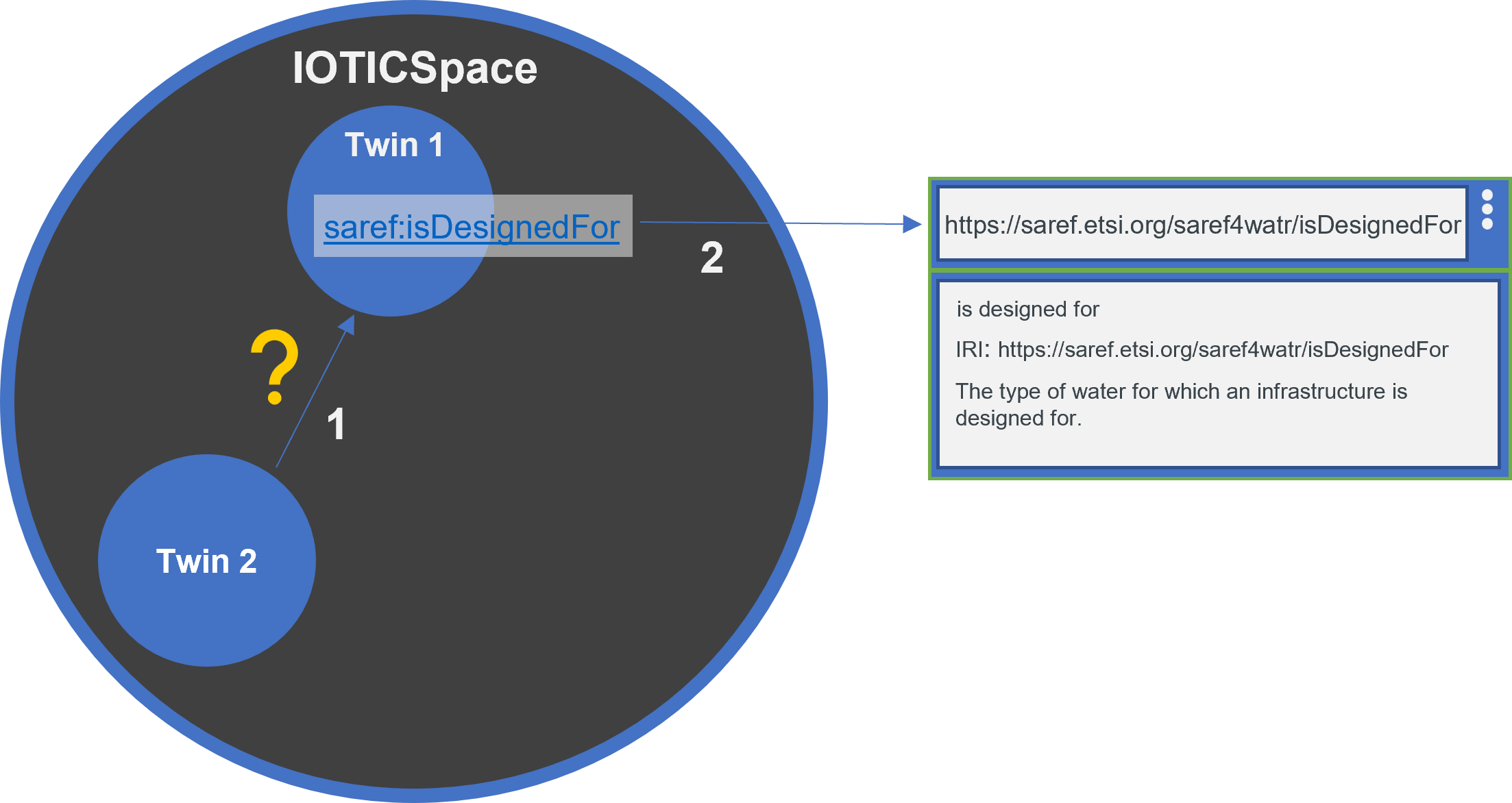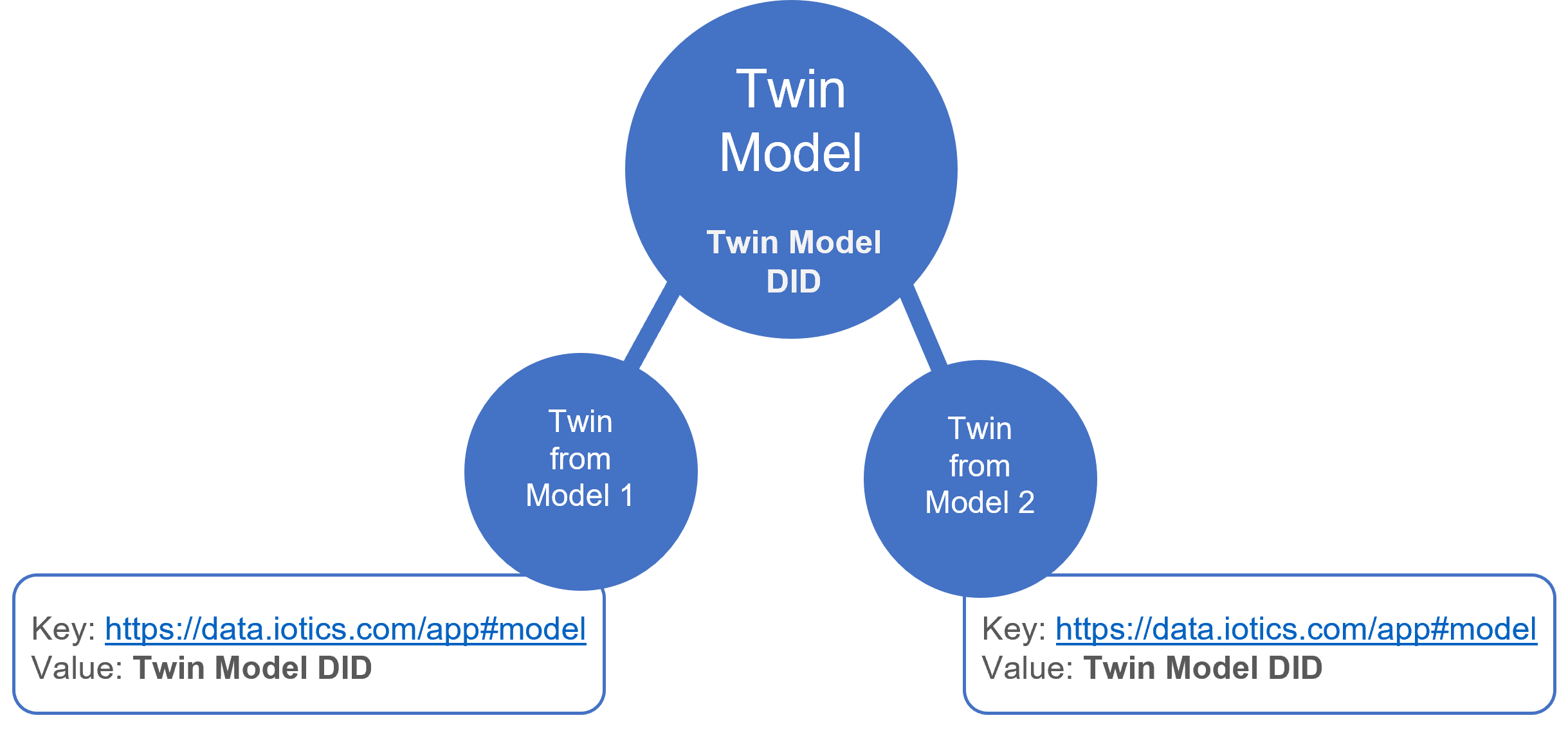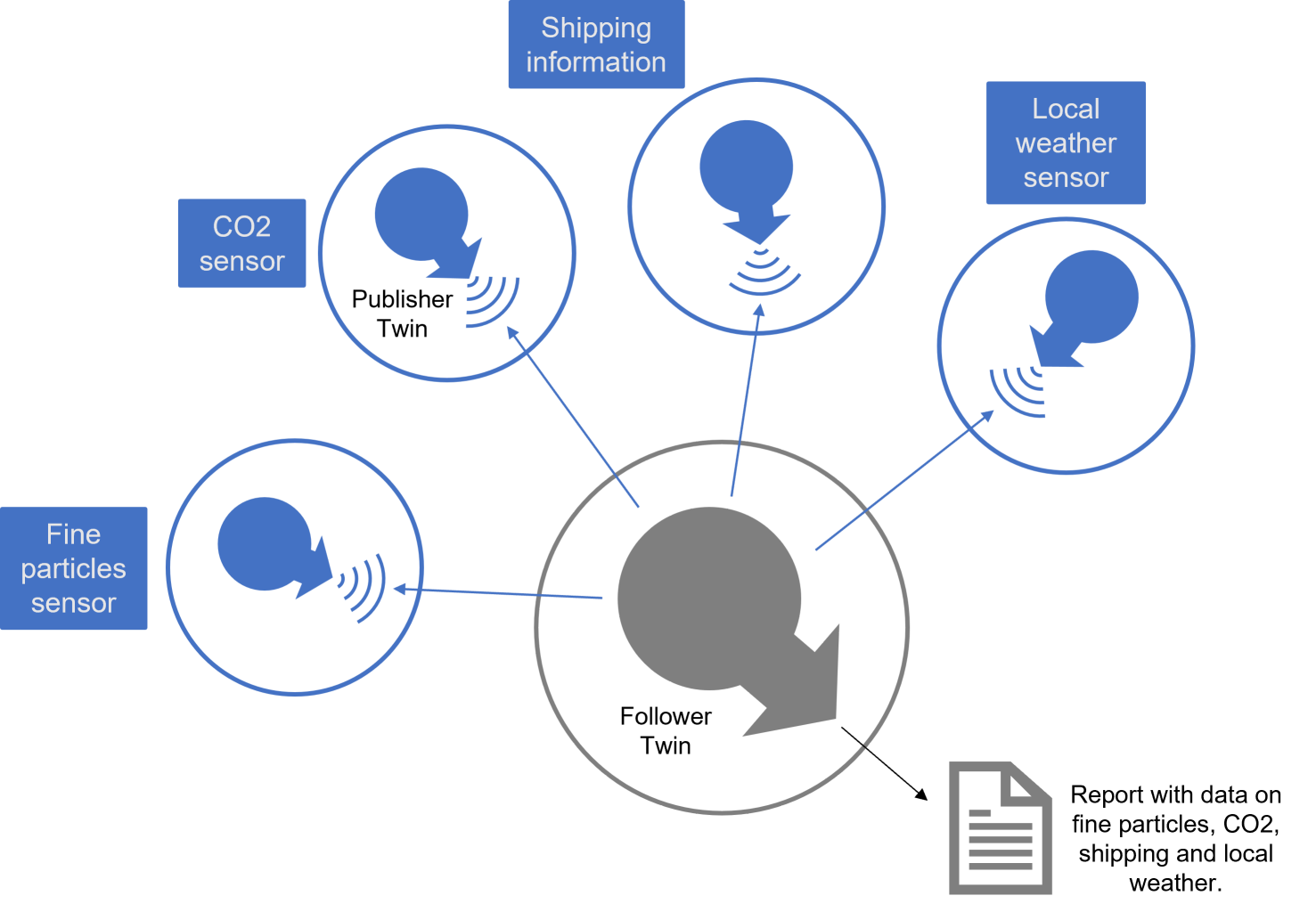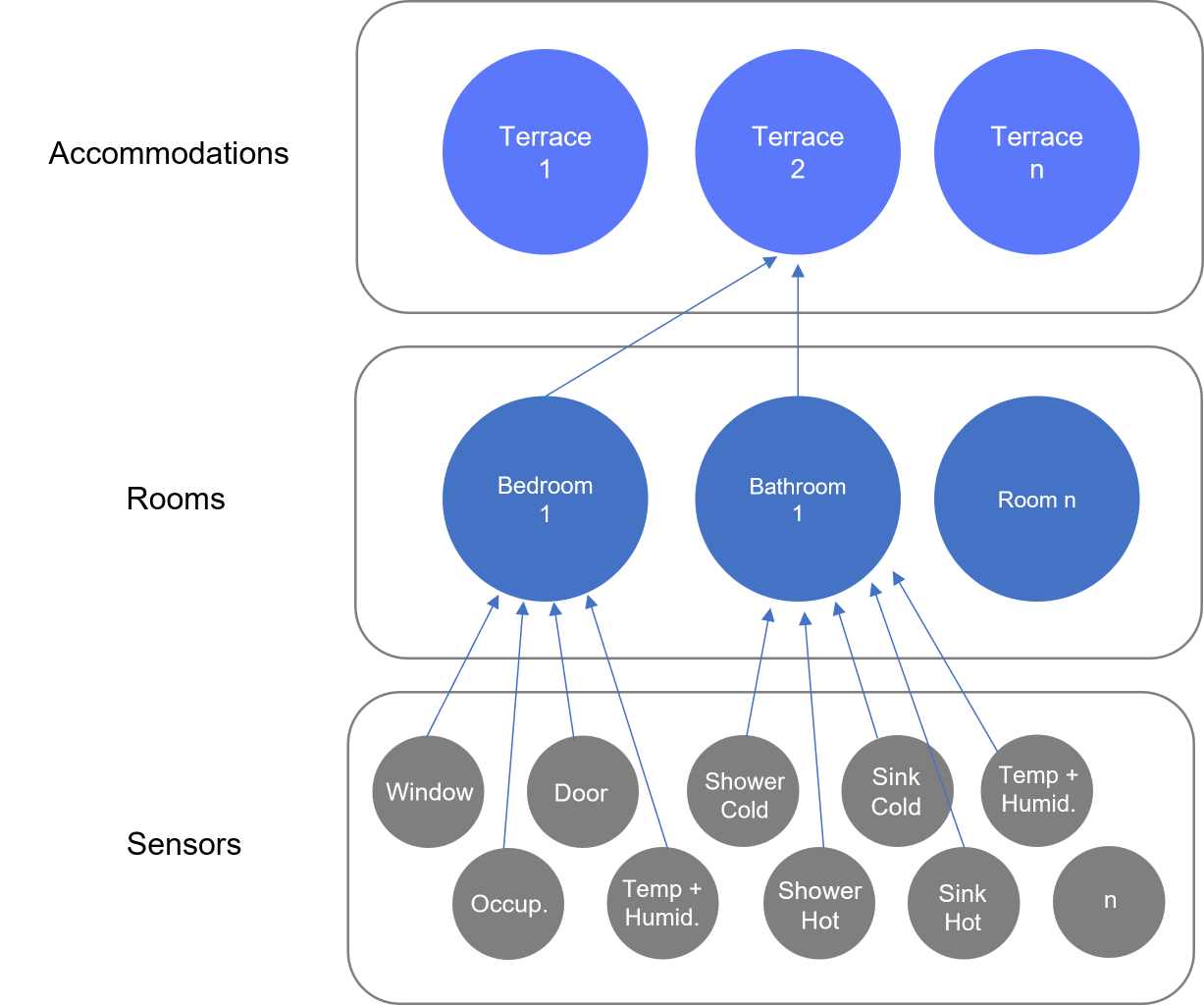Linked Data
What is Linked Data?
Linked data is a technique for publishing, linking and reusing data. This is done through semantic web technologies, such as RDF (Resource Description Framework), which provides a way to represent and exchange data in a machine-readable and machine-interpretable format.
This video explains the very basics of Linked Data.
Linked Data and IOTICS
In IOTICS, Linked Data is applied as follows.
1. Linking concepts to their ontologies
An Ontology is a dictionary that defines concepts and their relationships, also referred to as ‘terms’, used to describe and represent a business domain.
Each property describing a Twin, Feed or Input Metadata is linked to the Ontology that defines it.
In IOTICS, it enables the common understanding and meaning across Twins and IOTICSpaces.
For example, https://saref.etsi.org/saref4watr/v1.1.1/#s4watr:isDesignedFor links the property ‘isDesignedFor’ to the Ontology defining its meaning. Any Twin created after Twin 1 can interoperate with it based on that Ontology.

2. Linking Twins with each other employing semantic properties
A Metadata property may define that a Car Twin contains an Engine Twin.
The semantics of the property defines the meaning of the information the property and its value have. The Car Twin can be linked to the Engine Twin by specifying the Car Twin’s DID. An example of such property is https://saref.etsi.org/saref4bldg/v1.1.2/#s4bldg:contains
In IOTICS, the semantic properties are employed at one of our most basic structures, the Twin Model and the Twin from Model.
Multiple Twins can be created from a Twin Model, which acts as a template to create Twins with the same structure specified in it. The Twin Model specifies which properties, feeds and inputs each Twin created from it will have.
Following the Linked Data principle, the Twin from Model will be linked to the Twin Model through a special property in the Twin’s Metadata, represented by this Key-Value pair:
| Key | Value |
|---|---|
| https://data.iotics.com/app#model | Model Twin DID |
Twins from Model, as seen below, can be recognised as such thanks to their key-value pair in the special property, which links them to the Twin Model.

3. Linking Twins with each other by Feeds
A feed, in IOTICS, is a way to uniquely identify and securely access some structured data, delivered via the feed's payload. It represents a link to that data and it can be followed, or more appropriately subscribed to, by a Consumer Twin.
Feeds act as labels or tags that allow for easy categorization and organization of data, specifically the asset status data published over that feed.
This is similar to how linked data uses URIs (Uniform Resource Identifiers) to identify and link related data resources. Just as a URI provides a unique identifier for a resource and allows it to be linked to other related resources, a feed provides a label that identifies and categorizes related data. In IOTICS the feed is expressed as the pair <twin did>/<feed id>.
Below is a short schema of our SHAPE project solution for the Portsmouth Port. This project aims to transition the port into a zero-emission zone. To do so, a consolidated report with the various factors that affect emissions needed to be created. The several feeds published are followed by a Twin that receives the information and provides the report.

4. Linking Twins to their real-world counterpart
A Twin is, in itself, a link to what it represents. The Twin’s Metadata and Identity are the ways to form the link between the virtual and the real asset and the feeds are the means to retrieve the data.
For example, the NGN Customer Energy Village is a project that aims to identify the most affordable and practical solution to moving customers onto low-carbon, low-cost energy.
For that, Digital Twins of installed sensors are described and linked to the accommodations, rooms, floors and appliances in the houses of the village to allow accurate identification of the data.
The descriptive metadata of each virtual Digital Twin of a physical sensor includes a semantically described link to the Digital Twin of the accommodation and the Digital Twin of the room. These links may or may not be permanent. The connector will update the linked data if a sensor changes position.
This, in essence, creates a knowledge graph of linked assets' Metadata, meaning that querying and exploring all sensors in a building is possible, as you can see below.

Updated almost 2 years ago
